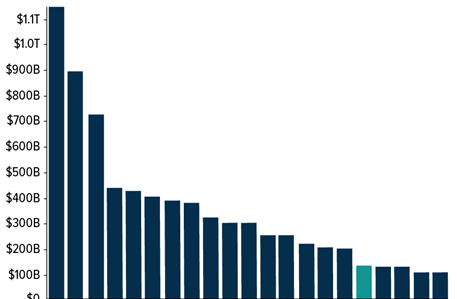Strengths
The Czech central bank’s purchase of $1 million in bitcoin, a USD-based stablecoin, and a tokenized deposit signals rising institutional confidence in digital assets. By testing custody, security, and AML processes end-to-end, the bank reinforces the legitimacy of tokenized finance. This early adoption highlights the expanding role of blockchain-based assets in future payment and investment systems. The Czech central bank became the first central bank to buy bitcoin.
BNY Mellon’s launch of a money market fund designed to hold GENIUS Act–compliant reserves marks a major step toward institutionalizing U.S. stablecoins. The fund targets a stable $1 share price with 99.5% exposure to government-backed instruments such as short-term Treasuries and government repos, enhancing transparency and regulatory rigor. Initial investment from Anchorage Digital reinforces the growing alignment between traditional finance and on-chain payment ecosystems, strengthening the foundation of regulated digital dollars.
Tether’s $135 billion in U.S. Treasuries and 500 million global users cement its position as a systemic player in global markets, ranking as the 17th-largest holder of Treasuries worldwide. Its dominance in tokenized assets, including roughly 100 tons of physical gold backing its gold token, strengthens market confidence and drives broader institutional adoption. This scale and diversification reinforce Tether’s influence across the digital-asset ecosystem.

Weaknesses
Bitcoin falling below $95,000 and losing nearly all its gains for the year underscores how fragile the market remains. Heavy selling triggered $19 billion in liquidations and erased more than $1 trillion in total crypto value. ETFs saw $870 million in outflows, and liquidity dropped 30%, increasing price volatility. Bitcoin continues to be highly sensitive to macro pressures, weakening overall market stability.
Morgan Stanley’s view that Bitcoin has entered the “fall season” of its four-year cycle—and its recommendation that investors harvest gains—signals rising institutional caution. Its framing of an approaching “crypto winter” highlights vulnerability to cyclical downturns and shifting liquidity conditions. Such warnings from major Wall Street strategists can dampen market sentiment and intensify short-term downside pressure.
According to CoinMarketCap, among the top 100 crypto assets, the biggest losers over the past seven days were Aerodrome Finance (AERO), down 19.09%, followed by Canton (CC), down 14.79%, and Decred (DCR), down 11.96%.
Opportunities
Canary Capital Group LLC launched the first U.S. spot XRP ETF, unlocking new institutional demand. Nasdaq’s certification of the spot XRP ETF (XRPC) opens a new segment of institutional crypto exposure beyond Bitcoin and Ethereum. The launch coincides with strong network growth, over 21,000 new XRP wallets in 48 hours, and a 31% surge in trading volume, signaling expanding investor interest. This milestone positions XRP for broader adoption as traditional asset managers integrate more diversified digital-asset products.
Singapore is accelerating institutional tokenization frameworks. Its efforts to trial tokenized MAS bills, regulate stablecoins, and expand CBDC pilots position the country as a global leader in digital-asset infrastructure. Clear rules on reserve backing and redemption standards strengthen trust in stablecoins, while cross-border CBDC collaborations with major central banks support future interoperability. These initiatives foster institutional adoption and scalable tokenized finance.
Texas is emerging as a strategic hub for crypto innovation. Coinbase’s decision to leave Delaware and reincorporate in Texas highlights the state’s rise as a pro-innovation environment with lower costs, friendlier regulations and tax rules, and clearer legal frameworks. Texas’ push to attract blockchain firms creates stronger support for digital-asset companies, positioning the state as a growing U.S. center for crypto development. This shift may accelerate institutional investment and industry expansion.
Threats
Declining investor appetite is forcing treasury buybacks. Upexi’s approval of a $50 million share repurchase program underscores a broader trend of digital-asset treasury firms turning to buybacks as demand for DATs weakens. The company’s stock collapse, down 50% in a month and nearly 90% since April—reflects deepening market distrust. With Solana down almost 30%, treasuries face heightened volatility and shrinking valuations that threaten balance-sheet stability.
Scammers in Australia impersonated police and misused the government’s ReportCyber system to legitimize calls and steal crypto, reflecting a sharp rise in highly convincing fraud schemes. Regulators have taken down 14,000 online scams since July 2023, including more than 3,000 involving crypto, along with cases such as $5.9 million in seized illicit funds and $1.6 million in ATM scam losses. This escalation threatens user trust and intensifies regulatory scrutiny across the sector.
According to a CoinTelegraph article, the UK faces a strategic threat as dollar-denominated stablecoins dominate $299 billion of the $300 billion global market, leaving the British pound without on-chain competitiveness. Fintech leaders warn that the absence of a GBP stablecoin could push the UK behind the U.S. and EU in real-time digital payments and tokenized finance. Meanwhile, cautious regulatory proposals from the Bank of England risk slowing innovation and widening the gap with faster-moving jurisdictions.

